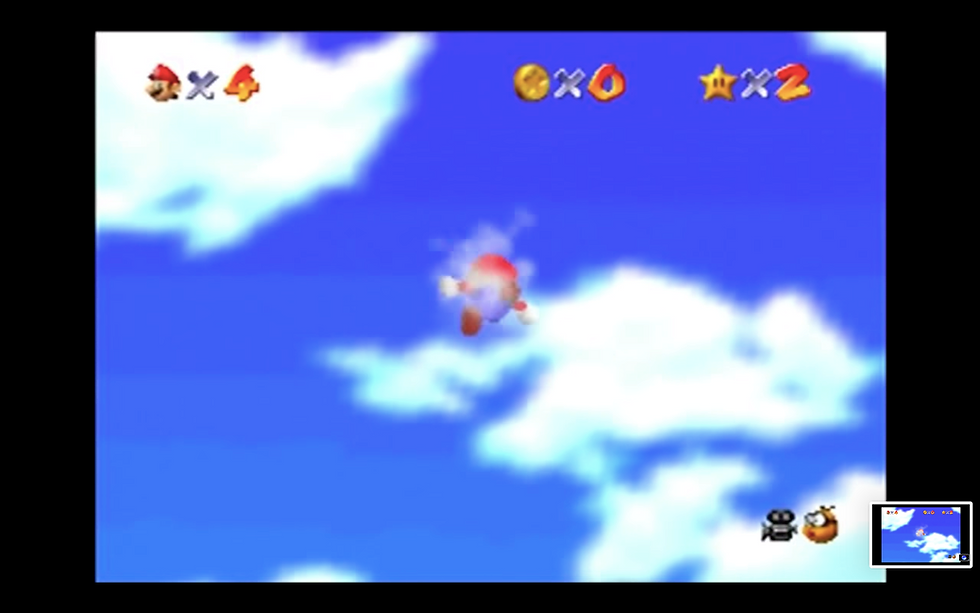Game Review: Prince of Persia
- Noor Amin

- Oct 17, 2019
- 4 min read
Originally released for the Apple II in 1989, Prince of Persia is a critically-acclaimed platformer that inspired generations of action-adventure games. The narrative is situated in the ancient Persian Empire, in which the player assumes the role of a young man pursuing a princess trapped in a castle.
Prince of Persia opens with the following dialogue:
In the Sultan’s absence, the Grand Vizier Jaffar rules with the iron fist of tyranny. Only one obstacle remains between Jaffar and the throne: the Sultan’s beautiful young daughter…
The next scene reveals Sultan’s daughter in a chamber when the Grand Vizier enters the room and gives her an hourglass. The subsequent text establishes the premise of the game:
Marry Jaffar… or die within the hour. All the Princess’ hopes now rest on the brave youth she loves. Little does she know that he is already a prisoner in Jaffar’s dungeons.
Immediately, developer Jordan Mechner draws on traditional fairytale tropes—the ultimatum, the helpless princess trapped in the castle, the dashing savior with whom she falls in love—to contextualize the player’s objective.
The principal game space is set in the Sultan’s maze-like dungeons, in which each of the twelve levels takes place in a more treacherous section. Mechner introduces the theme of mechanical ludic difficulty by combining an increasing number of obstacles with a time constraint, a finite number of lives, and the dreaded “permadeath.” For instance, level one introduces the primary mechanics of the game. The protagonist must jump to higher platforms to advance through the maze. Some floorboards shake to convey that the player may fall into rooms, while others are darkened to indicate that they trigger a door opening.

Unlike other platformer developers in the 1980s, Mechner opts for a single-screen camera angle in lieu of the more advanced left-right scrolling movement. The bi-directionality of the players’ motions contrast with the linear storyline and lends the game a puzzle component. In level two, the player must rely on sound effects that signify doors opening in off-screen rooms. By hinting that adjacent rooms are safe for the player, Mechner marries the restrictions of single-screen movement with a modified Leap of Faith concept.
The protagonist progresses through the twelve levels, acquiring weapons and fighting the Sultan and his henchmen. At the end of the final level, the princess embraces the protagonist, and the game cuts to the following text:
The tyrant Jaffar lies dead, his power shattered. Throughout the land, the people of Persia hail their Princess… and the brave youth who saved her from a force of darkness. No longer a stranger, he shall from this day forth be known as… Prince of Persia.

Immediately, present-day gamers may be left unsatisfied: the characters in Prince of Persia lack the rich personas incorporated into more recent platformers. What happens to the couple? Why did the princess love him to begin with? How will the country change under new leadership? Very few elements of the narrative are lost by reducing the storyline to its core; a dark-skinned antagonist preys on a powerless woman until a blond hero defeats him. Players may argue that this type of storyline conflicts with twenty-first-century sensitivities.
However, one must consider the era in which Mechner created the game. The prosperity of the average American family soared after World War II, thus allowing a culture surrounding leisure. Games began to take precedence in the 1980s, in which two transformative games—Rubik’s Cube and Pac-Man—both debuted. This newfound fascination with entertainment masked an undercurrent of deep-seated xenophobia in the United States. Concerning Iran, the US failed to rescue fifty-two Americans at their embassy in Tehran, and the Iran-Contra scandal made headlines. The Cold War engendered fierce loyalty among Americans to democracy and freedom from oppression.
In the most literal sense, Prince of Persia tells the story of a white protagonist struggling against a non-white “tyrant.” The undeveloped nature of the characters—whether intentional or brought about due to the memory limitations of retro games—allowed players at the time to inject ideals of American exceptionalism into the plot.

Though the game was born into a pro-democracy wave, Mechner argues that Prince of Persia was built to appeal to a broad audience. In an interview with Gamereactor, he points to a moment in the final level that speaks to his claim. The protagonist encounters his doppelgänger—created by jumping through a mirror in level four—which bars him from the princess. The player may attack the clone, but the damage affects both the enemy and himself. Only by fusing with the clone may the player pass into the princess’s chamber. Mechner describes the clone as a personal barrier, which adds a human element to the game. He states, “our shadow is not our enemy; just as in Prince of Persia, if we can absorb our shadow back into ourselves instead of trying to struggle against it, it can give us the strength to be a whole human being.”
Regardless of whether players accept the developer’s intent or the historical interpretation, the starkness of the narrative, mechanics, and aesthetics afford players a sense of possibility. That’s what makes the game revolutionary.
Works Cited
Prince of Persia - Jordan Mechner Interview. Gamereactor, 2015. https://www.youtube.com/watch?v=DxK5RQ7qQGM.
“The 80s Timeline.” National Geographic, April 10, 2013. https://www.nationalgeographic.com.au/history/the-80s-timeline.aspx.




Comments